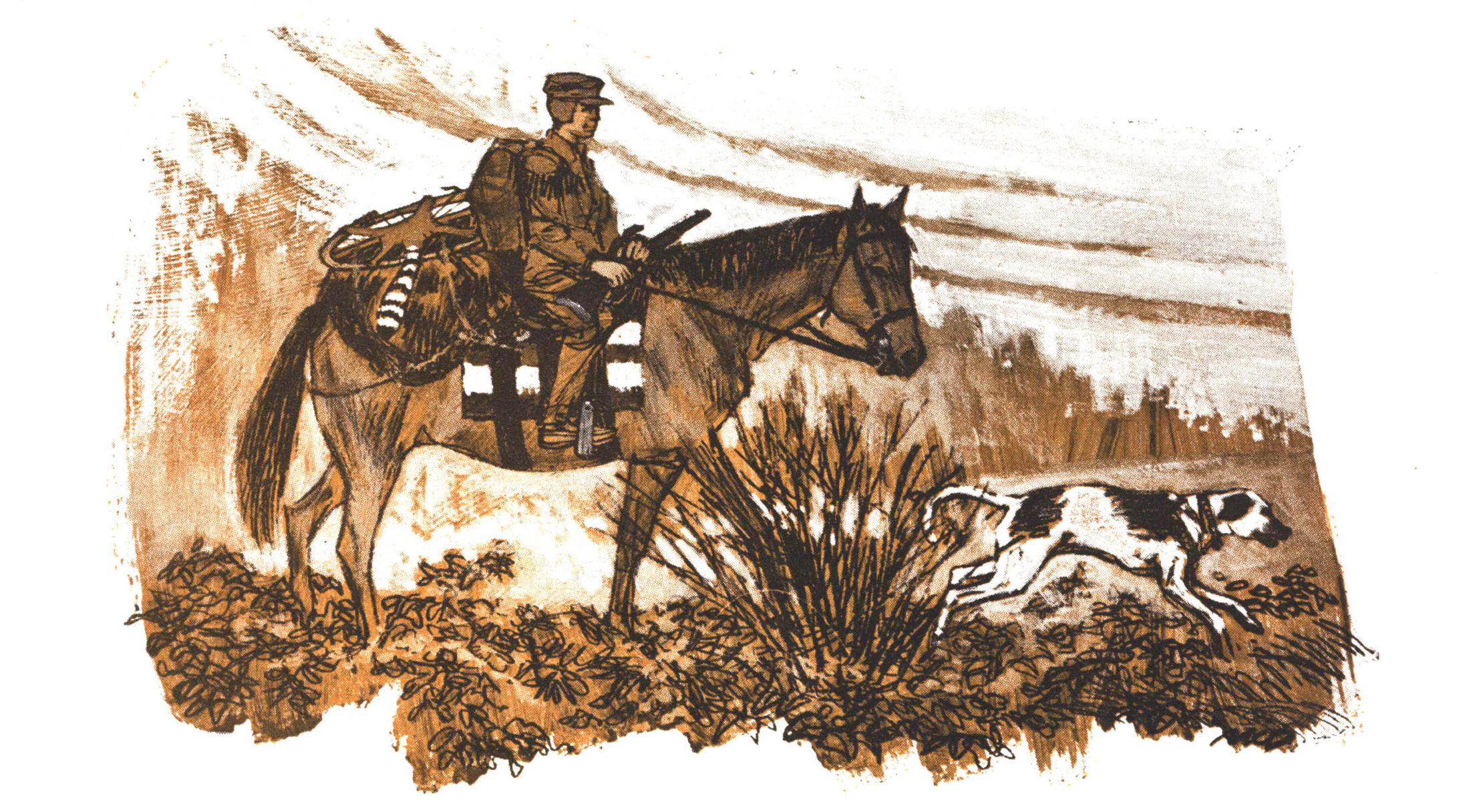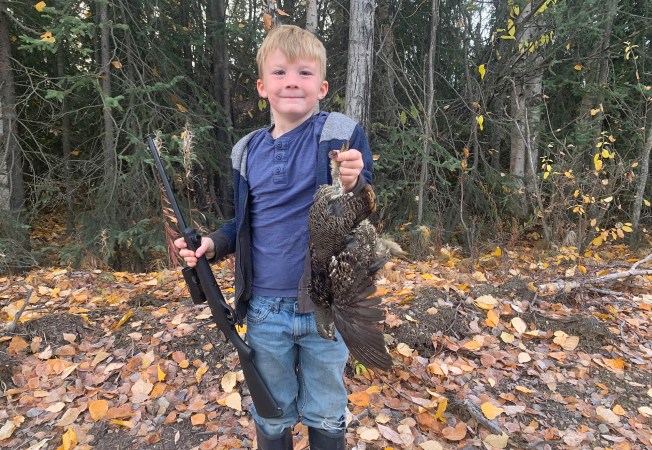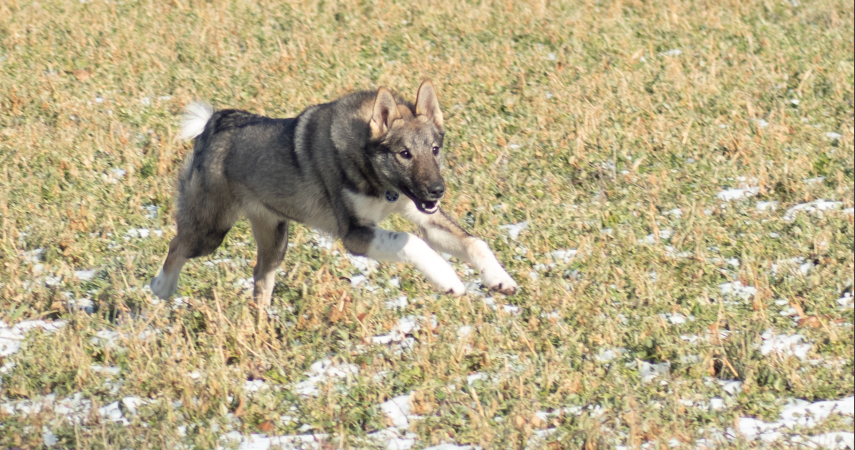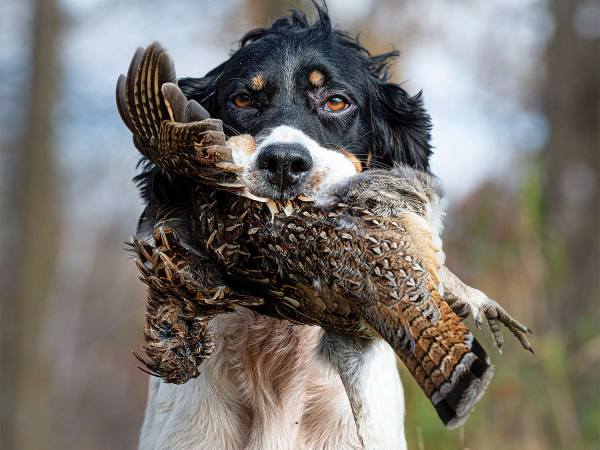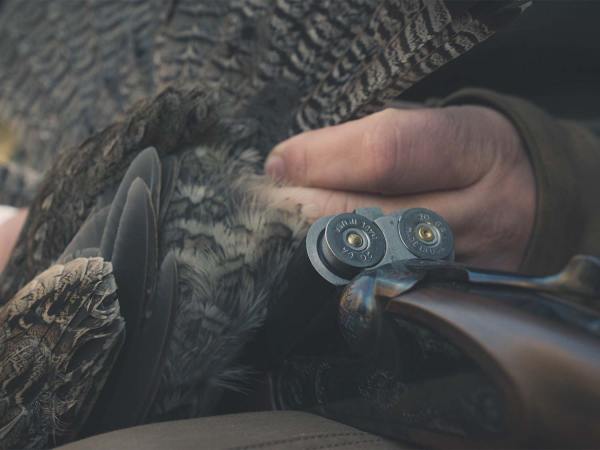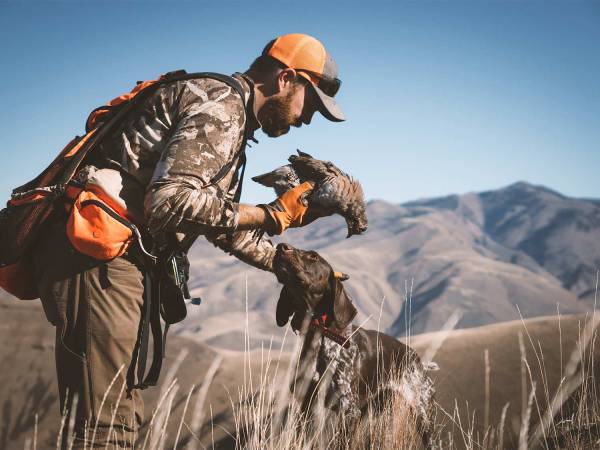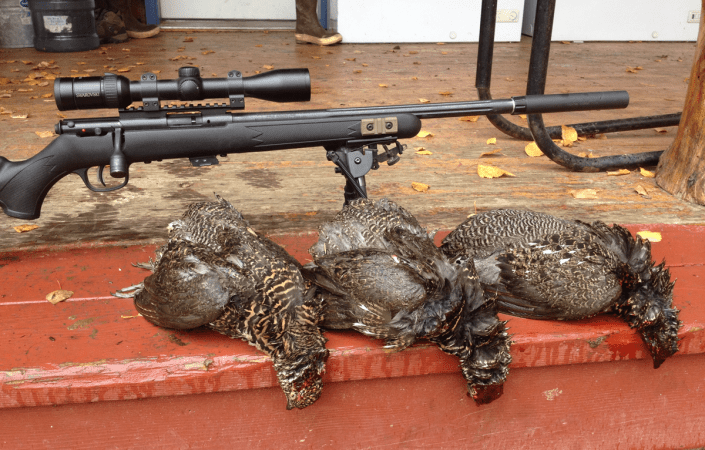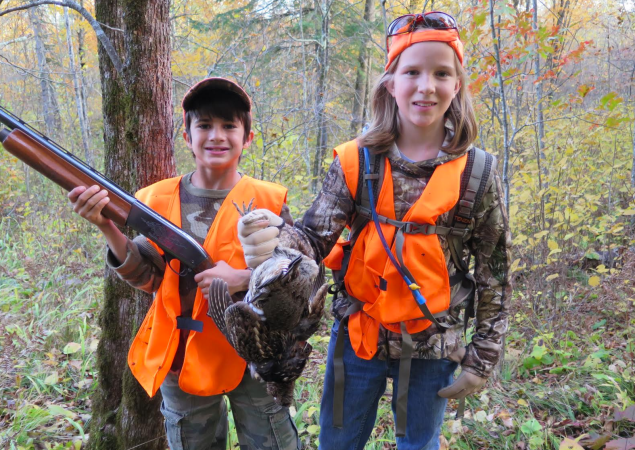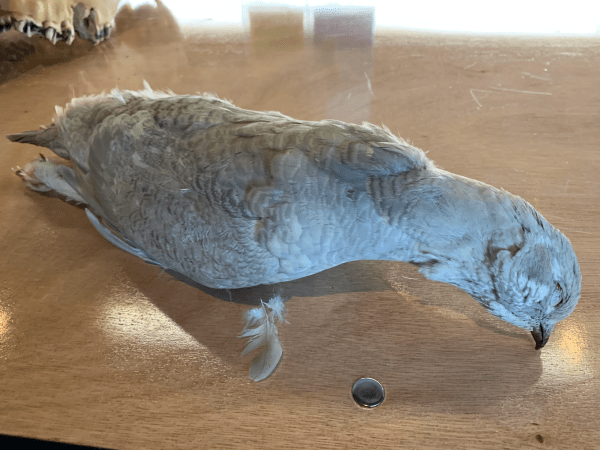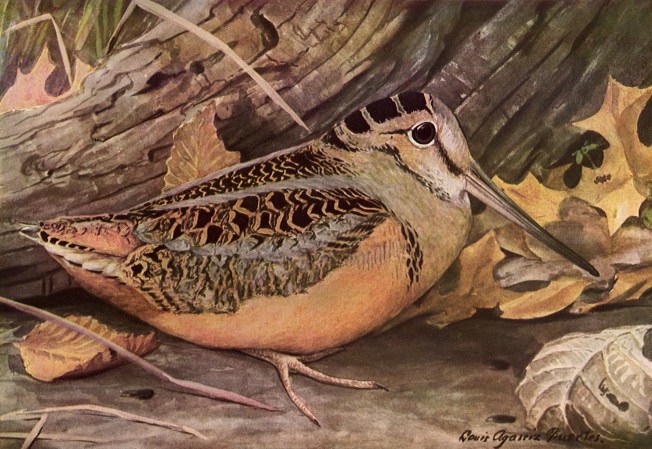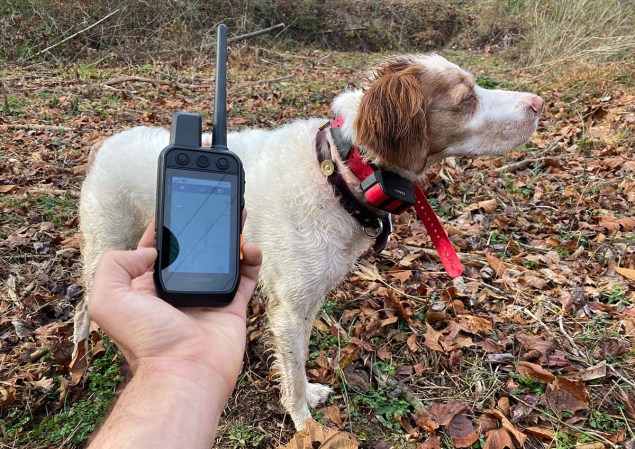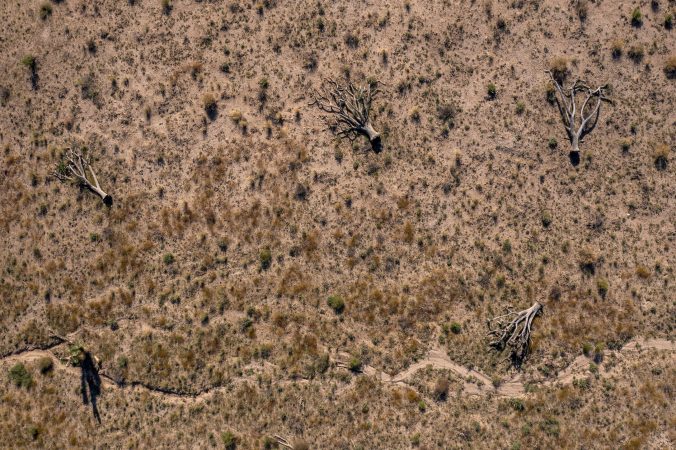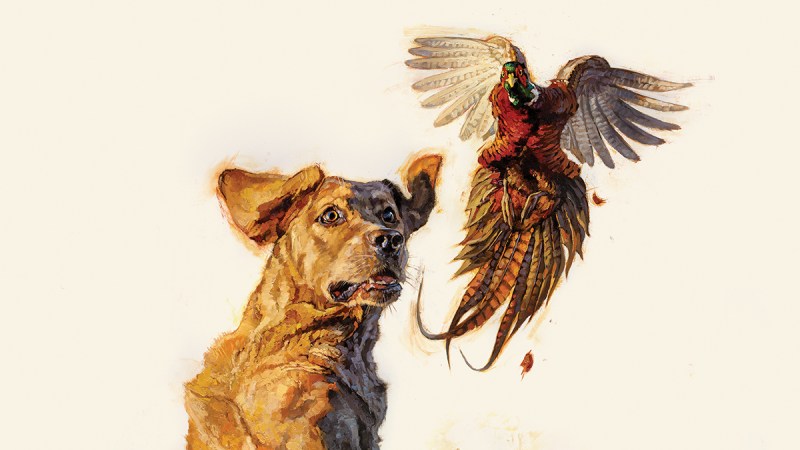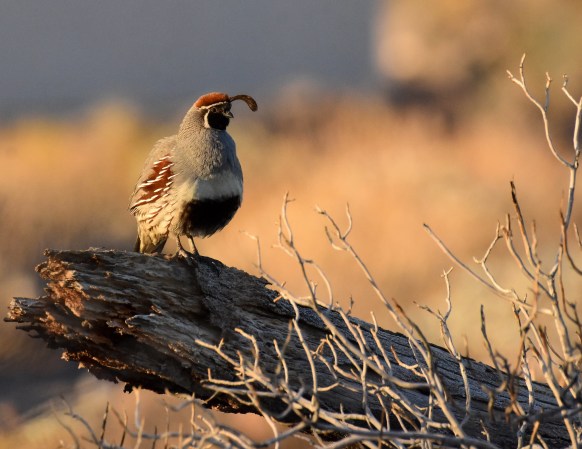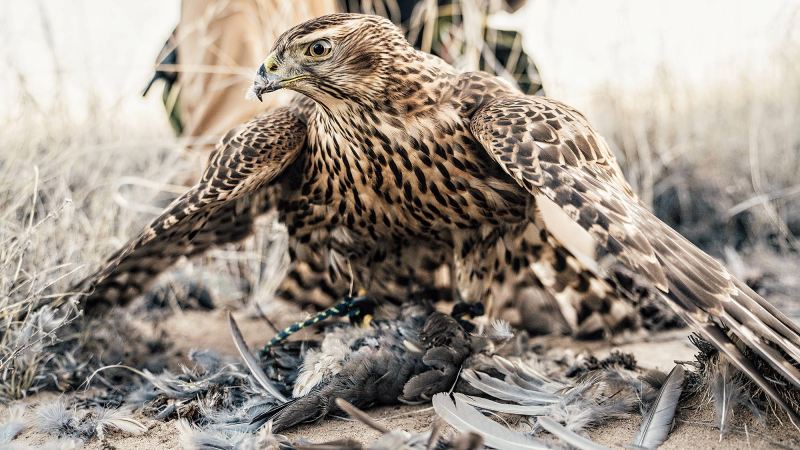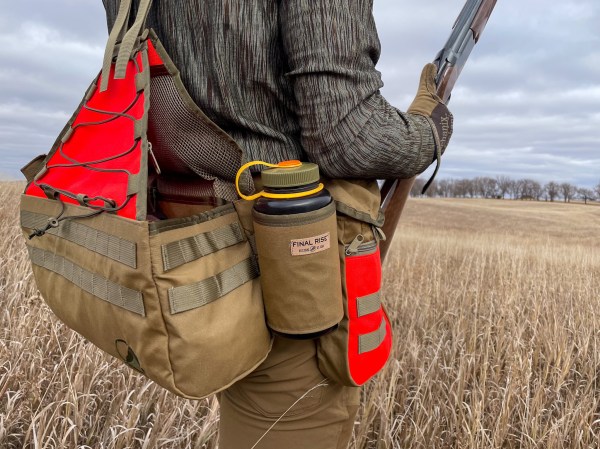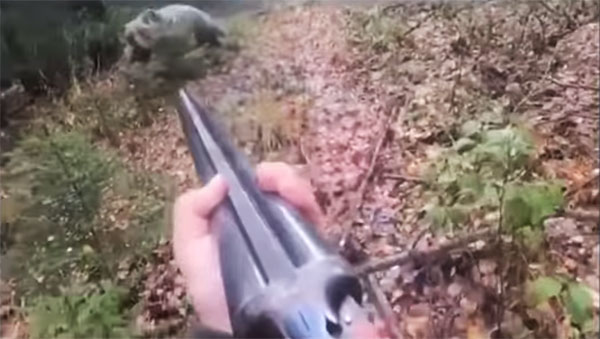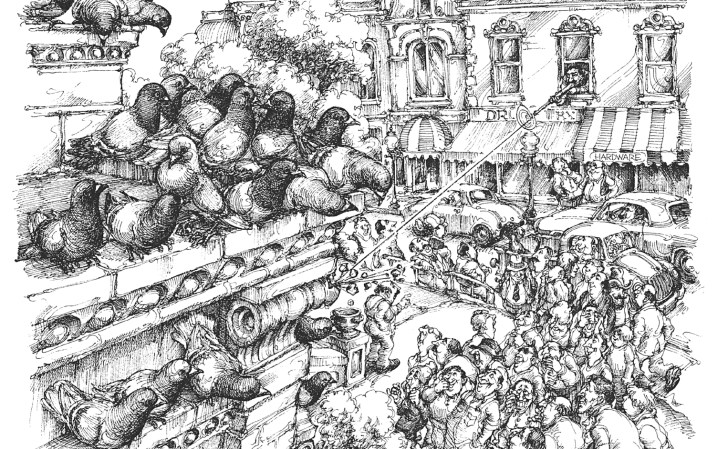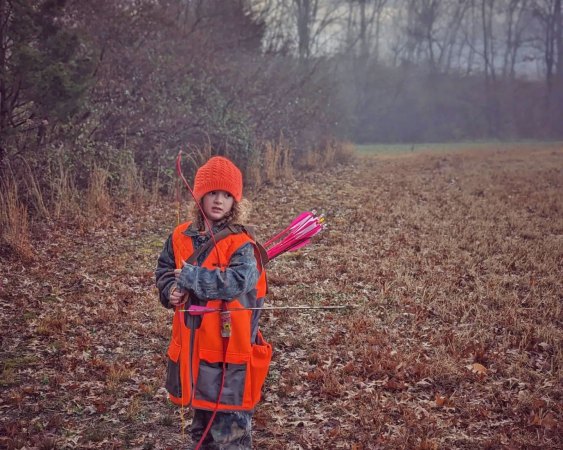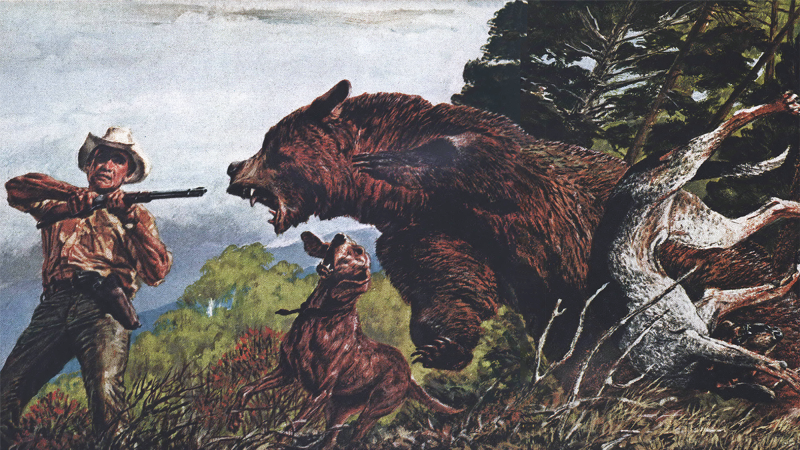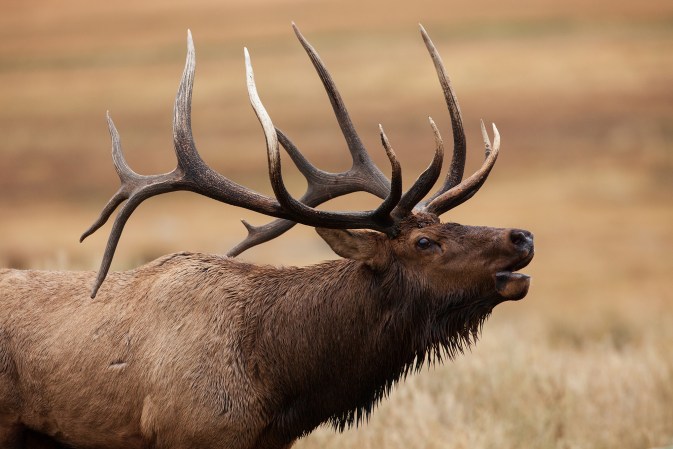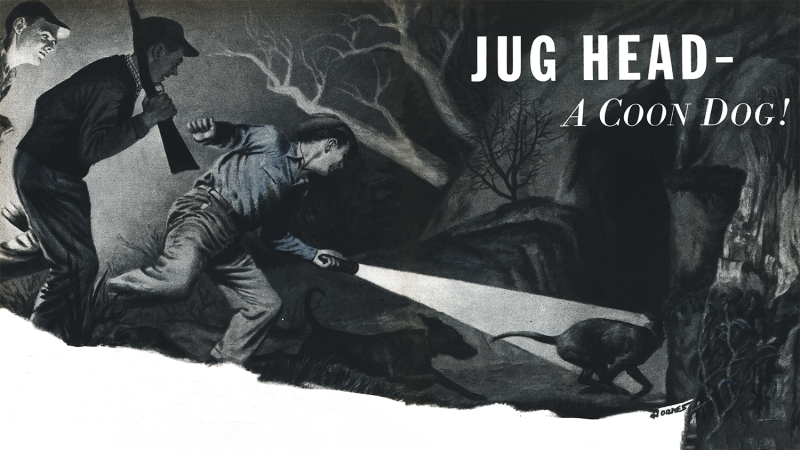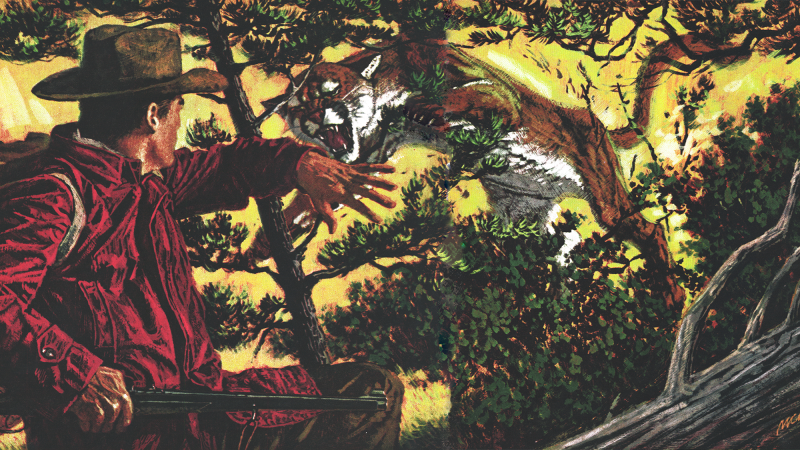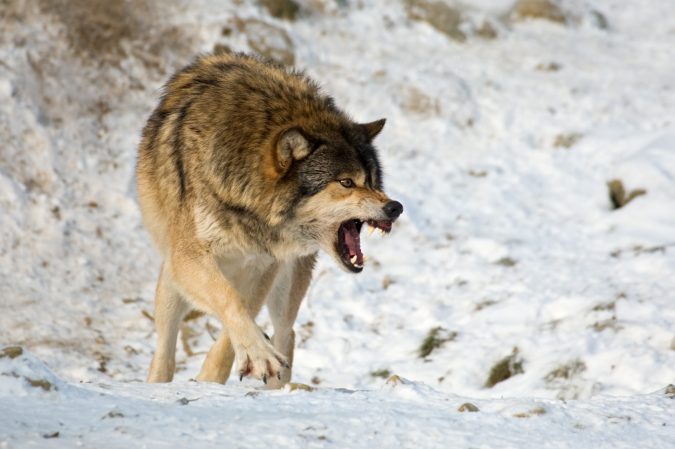We may earn revenue from the products available on this page and participate in affiliate programs. Learn More ›
As I walked up the rocky beach, my rabbit dog let go with a terrific clamor which told me he had jumped game and it was in sight. In a second, my rifle was at my shoulder and my eye was glaring through the tang peep sight, the hammer was cocked, and my finger was on the trigger. Out of the willows burst a snowshoe rabbit, going like the wind. I followed him through the sights for a couple of jumps, then pulled the trigger.
The strong wind off Lake Huron whipped away the black-powder smoke so that I could see the rabbit still running and unhurt. At that moment, a deer dashed out of the brush just in time to get a nose full of smoke. He put on the brakes and wheeled as my sights settled on his shoulder. He turned a somersault as the rifle cracked. Again the smoke was blown away, but the deer would run no more. I had killed my second deer. Both the dog and I were proud.
The year was 1906 and it was late November. The place was not far from Thompson’s Harbor, a small bay on Lake Huron a few miles up the shore from Presque Isle Lighthouse. I was 11 years old.
My home was in Alpena, Michigan, a town of about 12,000 population. My father, John A. McPhee, was a businessman who, with his partner, Charles Leavitt, bought and sold horses, cattle, and land. A team of fast driving horses was always kept, and there was a fast-pacing racehorse named L.M. My mother often used L.M. as a driver. We lived on the northwest corner of Sixth and Chisholm streets, and the old home is still standing. My father was no hunter and cared nothing about firearms. It was from my mother that I got my encouragement for life in the outdoors.
My mother was born and reared on a farm near the town of Pontypool, Ontario, Canada, among brothers who hunted and trapped. To her, there was nothing more interesting than woods and wildlife. She was intensely interested in hunting. Long before I could read, she read to me such books as the Scalp Hunters by Capt. Mayne Reid, The Leatherstocking Tales by James Fenimore Cooper, Hudson’s Bay by Robert M. Ballantyne, and a large book which contained between red-leather covers, The Lives and Adventures of Buffalo Bill, Kit Carson, Daniel Boone, and Davy Crockett.
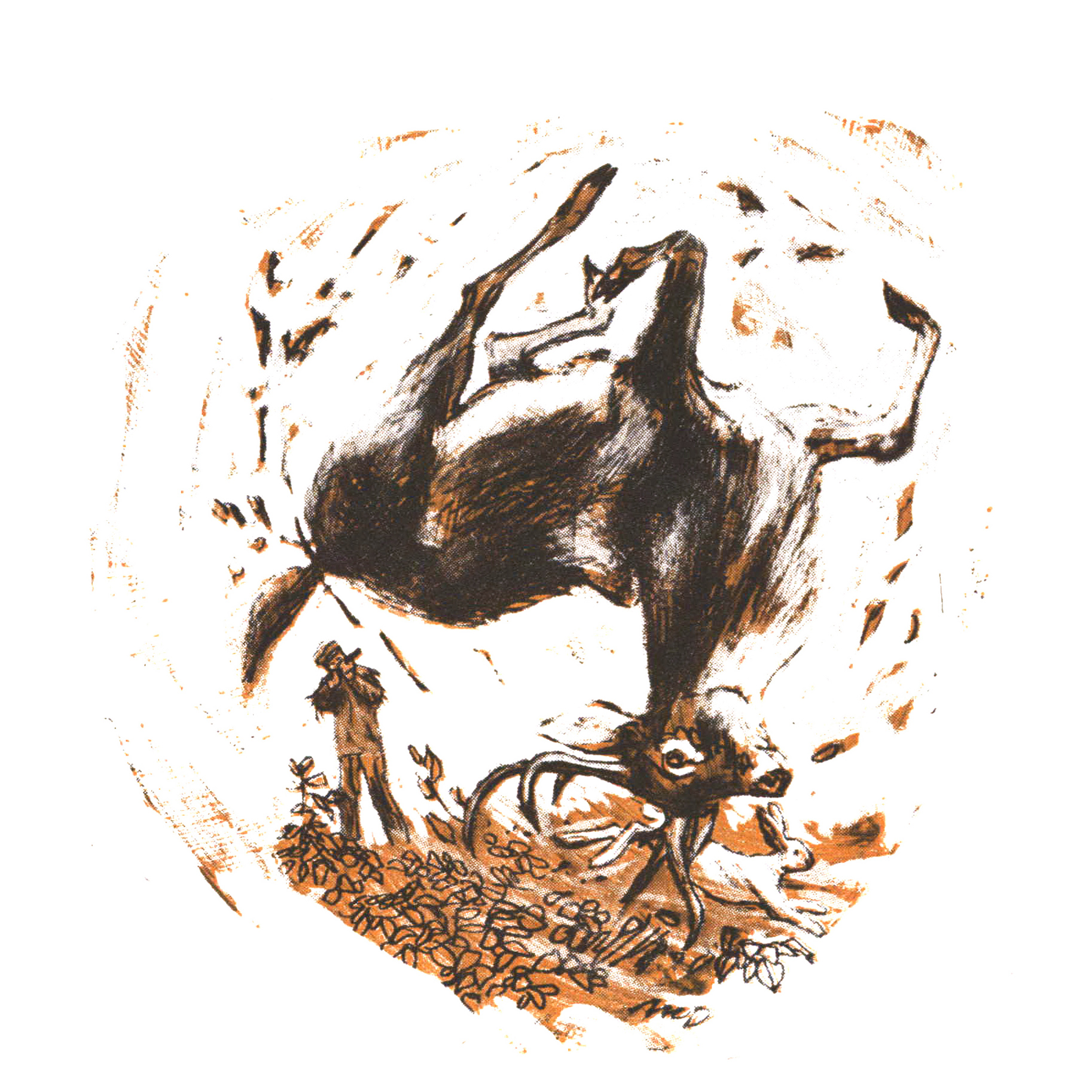
She had older boys teach me to swim when I was four years old. When I was six and started school, she encouraged me to spend a lot of time fishing and hunting. During those years, while roaming the woods, I was often badly bewildered about where home was, but I never had to stay out overnight and always made it home for supper.
Saturday was always my day in the woods, provided I had kept the wood box filled during the week and had been fairly obedient. In the evening, as I dragged my feet homeward with my stomach rubbing against my spine, my thoughts were cheered and my feet made lighter when I thought of the crock of baked pork and beans and home-baked whole-wheat bread that awaited me. It was my favorite food after hunting, and I ate enough for two men. Then, with a full stomach and a contented heart, I took care of whatever small game I had brought home, cleaned the rifle, and fell into bed.
We had a comfortable and happy home. My four older sisters were kind and sympathetic. We had electric lights and a telephone as soon as they were available. I kept my saddle horse, Pontiac, in the barn behind the house. He was what the Mexicans would call a bayo-coyote in color-buckskin, with black mane and tail and a black stripe running from mane to tail along his spine. When being saddled, he had a habit of rolling his eyes so that the whites showed, and blowing loudly through his nostrils, making a sound as though he were very angry. I never cinched him tight, and, despite this savage demonstration while being saddled, he never bucked, shied, or was anything but a kind and gentle friend.
It was no trouble getting away from the family on Thanksgiving Day. My mother encouraged me to spend time alone and hunting. She saw to it that I was warmly dressed in good woolen clothing, including a winter cap of gray wool cloth with ear flaps and moccasins over two pairs of wool socks. When away from her eagle eye, I took off the knitted socks, and in their place wore blanket socks, as did my Indian friends. I also carried a pair of rubbers in my packsack, in case I had to travel over wet ground or in rain or snow. I simply pulled the rubbers over my moccasins.
I had a buckskin hunting shirt that had been made for me by an Indian woman, Mrs. Jim Peshgoba. My packsack was an interesting item. My mother made it from half a seamless grain sack. The shoulder straps were made of the same material. The sack and shoulder straps were dyed red to afford protection against being shot for a deer, and to make it easier to find the sack when it was lying on the ground.
My hunting area was about 25 miles from Alpena, and I had ridden there on my horse, Pontiac, on the morning of Thanksgiving Day. A strip of canvas for a lean-to, a buffalo robe for a bed, two loaves of bread, two rings of sausage, a pound of maple sugar, some dried deer meat, a coffee can in which to boil the sausage, and a fork and spoon completed my outfit. My hunting knife did duty at meal time as well as in the field. Several feeds of oats kept my horse comfortable on a picket line, and at night I covered him with the saddle blanket. Best of all, I didn’t have to go home until Sunday afternoon.
It was a good deer, about 125 pounds and three points on each side of the antlers. It was the first one I had killed with my .38-40 Model 1892 Winchester rifle using my own handloads.
I felt proud and tried to do a very good job of dressing the kill. I had had lots of instruction about this from Louis St. Onge, my butcher friend in town. I had practiced at his slaughterhouse on beefs, sheep, and hogs. I had also been instructed in the Indian method by old Jim Peshgoba, a Chippewa. I was glad I had been a pupil of two experts and I tried to do a workmanlike job.
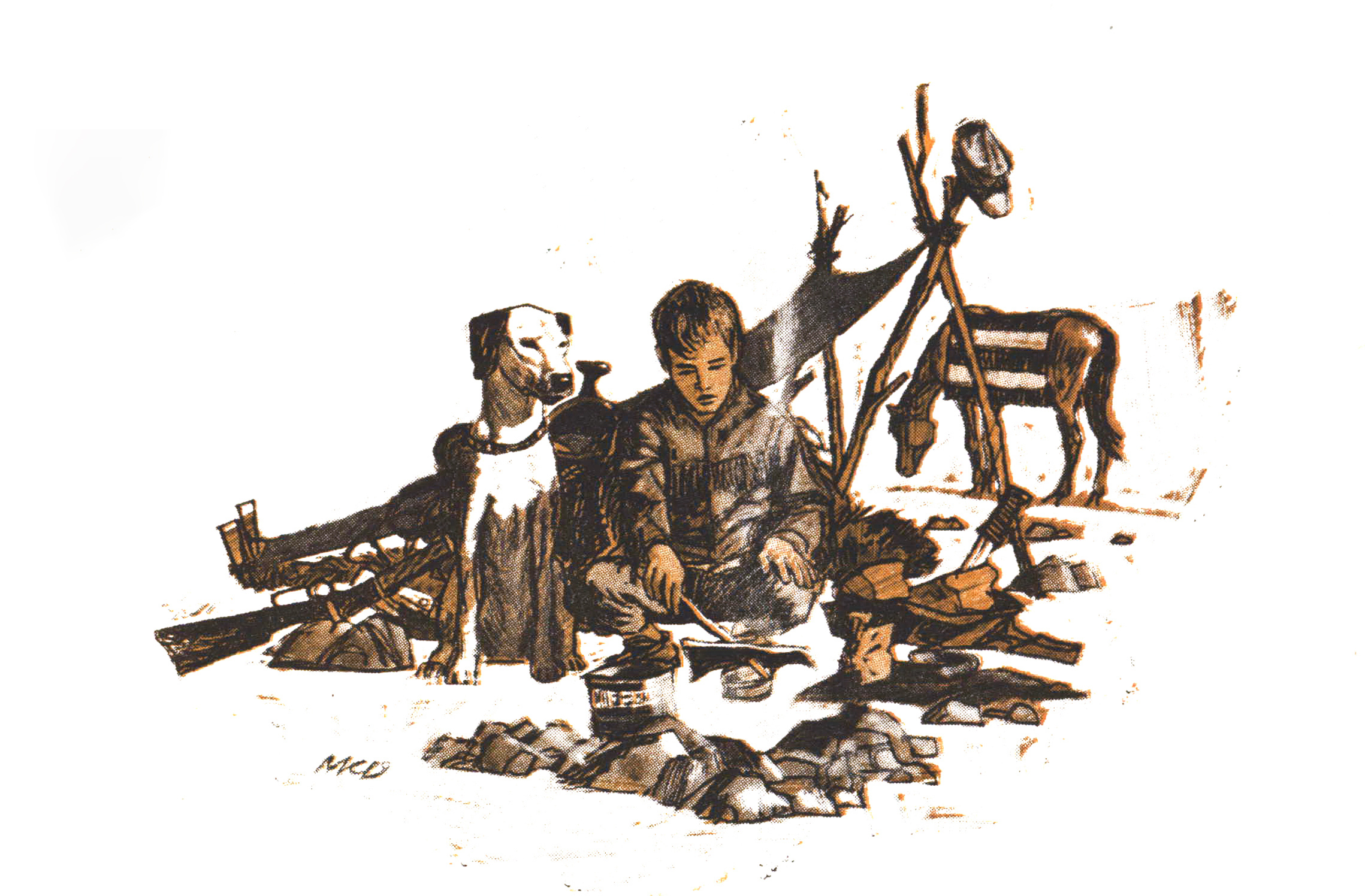
My hunting knife had been made for me by a blacksmith friend, Auguste DeRoche, who had learned his trade in Canada and practiced it as far west as Montana. It was the only tool I had to work with, but I soon had the skin loose and the insides out of the body.
While I was separating the brisket from the ribs, Pat, my dog, ate the kidneys, then started on the intestines. I had cut some branches from a small cedar tree and laid them on the ground to serve as a clean place on which to lay the meat.
I freed the brisket by cutting through cartilage of the joints which held it to the end of each rib. Next, I cut each front shoulder loose from the body, and the hind legs were taken by cutting through the joints at the hips. I turned the body on its belly and made a cut across the back where the back sinew starts, then I cut a slit in the sinew for my finger. I cut down on the ribs where the loin meat thinned out. I did this on each side from the rear as far as the loins extended.
Then, with my forefinger in the slit in the sinew and the knife working between the loin meat and the ribs, I pulled the loins forward and away from the body. With the help of the knife, I pulled the back sinew from the meat. This is the part that can be cleaned, dried, and separated into the toughest and strongest of sewing thread.
Now came the toughest part of the job—getting the two sides of ribs free of the spine without chopping. With my knife, I felt for the joint of each rib and cut through it. Finding this from the back was a feeling-around process, but I made it. I turned the body on its back and, with my left hand holding the ribs away from the spine as far as possible, I cut each rib loose.
The same operation separated the ribs on the opposite side. This sounds easy, but it was the hardest job for me. I then freed the ribs from the body by cutting the remaining flesh with my knife.
I cut the head from the spine at the atlas joint, the neck from the part to which each front shoulder had been attached, the spine was unjointed from that part, and again just at the hips.
Counting the head, I now had 12 pieces of deer which were a lot easier to handle than the whole carcass. This is the old Indian method of cutting up a deer.
I glanced at the dog. His sides were bulging as he lay on the grass in perfect contentment. I knew he would be glad to stay with the meat while I rode to the lighthouse where I could telephone my father to come for the meat with a team of horses. Before starting, I poured some cold water through the barrel of my rifle- I was using black powder-then dried and cleaned it by pulling a dry rag through the bore with a string. The ride to and from the lighthouse was a pleasure since my mind was filled with good thoughts of the hunt.
The next morning, after a breakfast of deer ribs roasted over the fire, I packed the pieces of deer to the old logging road in two trips, leading my horse out with a load and riding him back. The exposure to the air had formed a crust over the meat which protected it against blow flies and made it easy to handle. I spread the pieces out on some cedar boughs, and I was a proud kid when my father arrived. You can be sure I never mentioned to him that the dog had started the deer for me. It was unlawful to run deer with dogs, and I had not intended to do it.
To me, Pat was a valuable assistant in running snowshoe hares and cottontails to me, and frightening grouse into trees where I could cut them down with my rifle. No, I didn’t want to go home with my father. I had a couple more deer tags on my license. We loaded the meat into the buckboard and he drove off.
My first rifle had been a flintlock that had been given to me by an old friend, Ed Wesson, the gunsmith. I liked to be in his shop, and often swept the floor and did other things that helped him.
He knew my hunger for a rifle and gave me the :flintlock after cutting the barrel down from 40 inches to 30. He also taught me how to load it, shoot it, and clean it. With it, I had killed a deer two falls before this, and my father was so proud that he offered to buy me an up-to-date rifle.
Mr. Wesson found the .38-40 I used to kill this deer. It was a secondhand rifle, complete with an Ideal No. 4 loading tool that had a bullet mould attached to the ends of the handles, a cap extractor, and a dip measure for black powder. There was also a shell-resizing tool, a lead-melting pot and pot holder.
The holder was like a stove lid with a hole in it on which the melting pot could be set and a cook stove used to melt bullet metal.
All of these tools were a mystery to me, but Mr. Wesson taught me how to use them. He showed me how to heat the lead and tin in proper portions, which were 16 ounces of lead to one of tin. When the metal had been cast into bullets, each weighed 180 grains and had two grease grooves and a flat nose.
Beeswax and tallow were then melted and mixed together. Each bullet was dipped nose down into this lubricant, so that the two grease grooves were filled. Then the bullet was set, nose down, on a sheet of paper until the grease hardened. Next, they were forced through the bullet sizer, which was a hole in the lower handle of the tool. This made the bullet fit the bore of the rifle. Winchester No. 2 primers cost $2 per 1,000 and 6 . pounds of Kentucky Rifle powder cost $1.65.
Bullet lead was given to me by our grocer, Ed McCullough. It came to him as wrappers on chests of tea. I had a piece of block tin pipe which I cut into pieces with tin snips. I believe that I got about 200 loads of powder out of a pound. This made cheap shooting, even in those days, and it was fun to mold bullets and prepare loads.
Mr. Wesson taught me all about the rifle, and I reciprocated by bringing him ruffed grouse and cottontails. Because the grouse were usually shot as they sat on a limb looking down at my dog, Mr. Wesson taught me to shoot them in the head. It was short-range shooting, but I missed a lot until I learned steadier holding and squeezing.
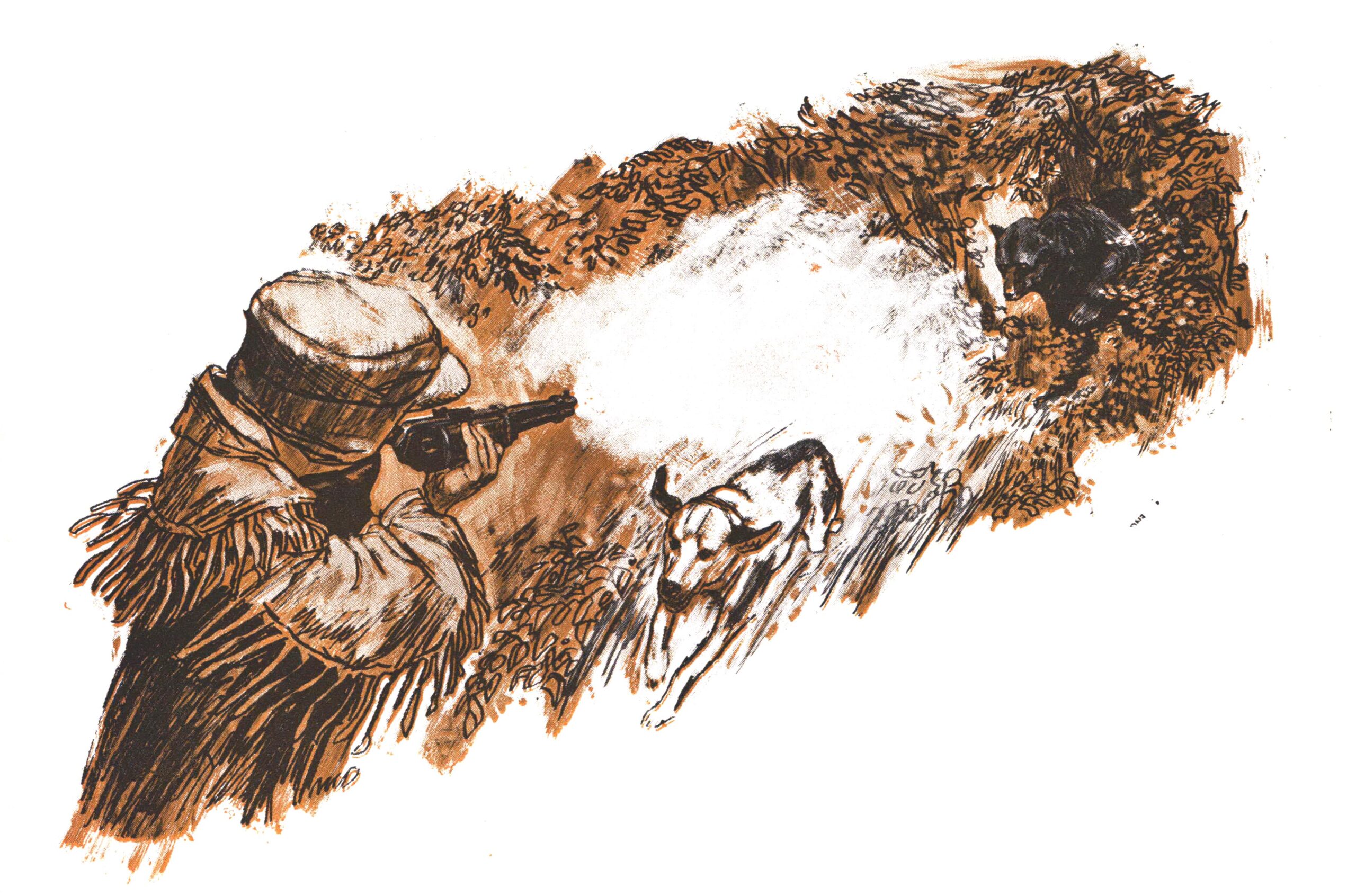
The cottontails and snowshoes were generally shot on the run with Pat screaming on their trail. But sometimes I sighted one that was far ahead of the dog where it could afford to take it easy and sit still between hops. Then I tried to make a head shot. I also trailed cottontails over the snow, and I routed them from brushpiles by poking at them with a stick or jumping on the brushpile. It was a meat hunt, but was great sport. During my 40 years in the north, 31 of them in and near Fairbanks, I killed all the game of Alaska except goats. I still believe rabbit hunting with a dog is more sport.
I had killed this deer on Thanksgiving afternoon, and my father left for Alpena about noon on Friday. After eating a lunch of cold, roasted deer ribs, my dog and I started out to add another deer to the bag. When I first planned this trip, it was with the idea of hunting partridges and rabbits. But now that I had a deer, I wanted another. As we walked along an old logging road, the dog hunted back and forth with great energy but found nothing.
I paused in a little marsh to eat some cranberries. Pat beat the brush all around me until, with a great racket, up went a partridge into a tree about 10 yards away. I leaned against a tamarack tree for steadier aim and brought it down without its head. Well, there was one for Mr. Wesson. In half an hour, I got another.
As I approached a clump of cedars, Pat ran into them, barking as if he were tackling an elephant. I had the rifle at my shoulder, expecting almost anything, when his barking turned to squeals of fear. He came running out of the brush, tail between legs and with a bear close behind. I fired almost instantly.
The bear turned and ran back into the cedars, either frightened at the smoke and report, or maybe I had wounded him.
Pat couldn’t be induced to go back after him. He evidently considered bears a bit out of his line. While there was about a quarter of an inch of snow on the ground where we had met the bear, I could find no cut hair or blood along his trail back into the swamp. It was getting dark, the wind felt colder, and our hunting fever cooled considerably.
In plain English, both of us were scared. We returned to camp, a warm fire, supper, and the buffalo robe. I considered the possibility of the bear attacking us during the night, but at last I fell asleep. Pat woke me with a great racket. I sat up in my robe with the rifle at my shoulder, but no bear appeared. The dog was under a birch tree, looking up and barking steadily. Slipping into my moccasins, and clad only in underwear, I walked carefully toward him. Against the sky, I could see something on a limb close to the trunk of the tree.
Holding on it, I found that I couldn’t see through the peep sight. I folded it down on the stock and flipped up the folding open rear sight. Now I could see the white of the front sight against the black object. I let drive.
The flash from the muzzle blinded me, but I heard a thump as something hit the ground. Pat rushed in with a roar, and a tremendous scuffle broke out. It was a coon that Pat had tackled, and it was giving the dog all he wanted. But the bullet wound soon took its toll and the coon went limp. Pat brought it to camp, very proud of himself.
Both of us were too excited to sleep, so I skinned and dressed the coon. Pat enjoyed a midnight snack of the innards. With the coon hung on a limb, and the skin draped over another, I felt more relaxed and went to sleep.
Saturday was cold and there was a strong wind from the east, so we hunted toward the north, across the wind. Pat started two rabbits, but they were going so fast I missed them.
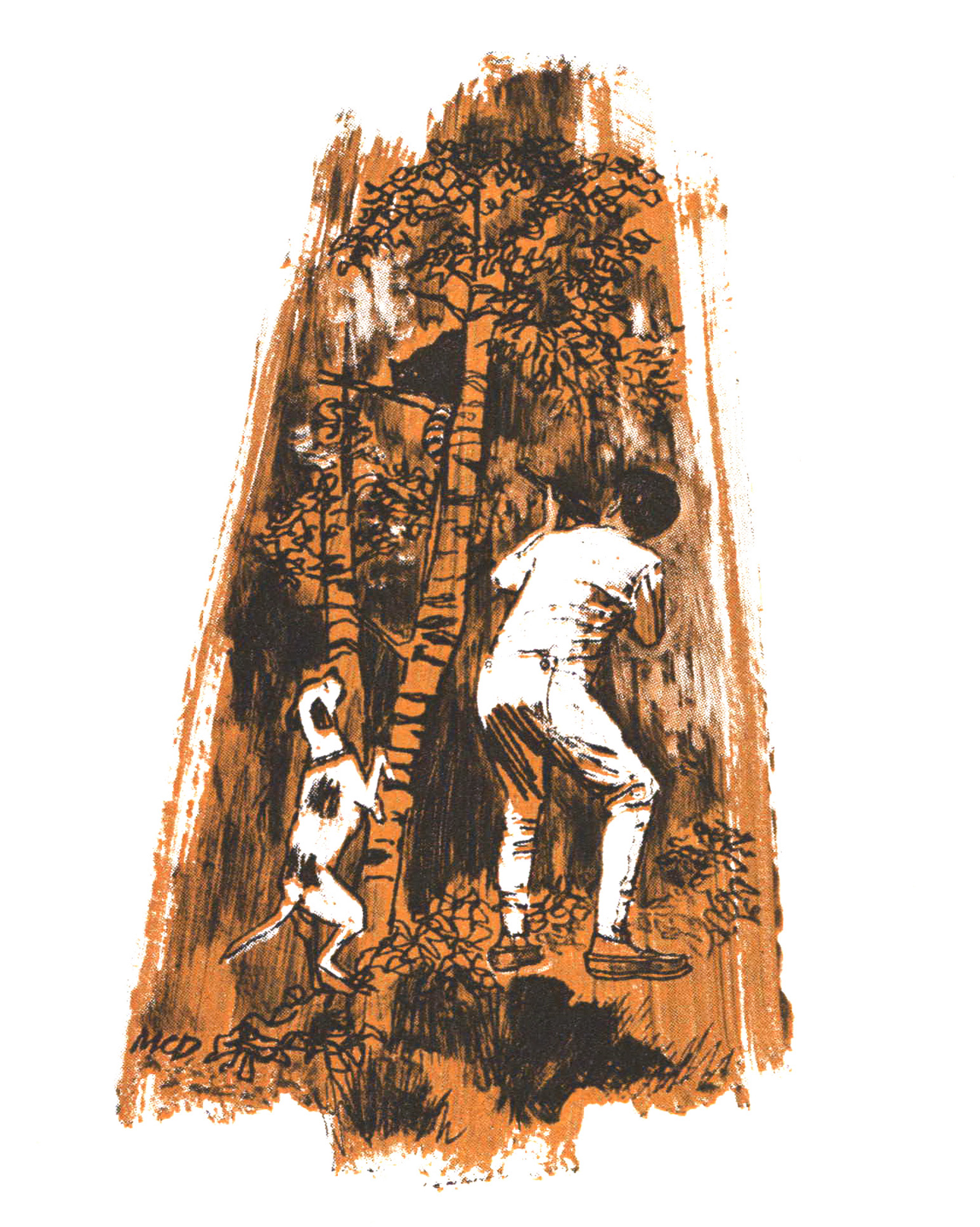
About noon, we followed an old road and came to a clearing with a few apple trees and a hollow in the ground, evidence that a house stood there at one time. There were small apples on the trees. and some on the ground. Limbs were broken, too. There was enough evidence to show bears were in the area. There were also deer tracks under the trees, so it seemed a good place to watch. We tried the woods around the clearing for rabbits, started one, and shot it. That was Pat’s lunch. I ate a ring of sausage boiled in my coffee can over a small fire. A couple of slices of bread made it a good meal.
In the evening, two grouse sailed into an apple tree. But we were after bigger game so I didn’t shoot. I may have fallen asleep because the first I knew of any change of scenery was an outburst from Pat as he tore after a deer that had come into the clearing. The two grouse didn’t fly, so I shot both of them and gave Pat the entrails for his supper. We dragged our feet back to camp. I had learned that a dog was too much company when watching for a deer to come to feed.
After breakfast on Sunday morning, we went to the cranberry marsh where I picked some berries and put them into the paper sack which had held my sausage. My mother would appreciate the berries, and I had my mind on the pies she would make with them. I had the rifle along in hopes of seeing game, but nothing showed. We went back to camp.
At camp, I stripped the bark from a cedar tree, then took under bark for string. I cut a willow, heated it over the fire, and bent it into a rough-looking circle. I tied it with the same bark. Then I put the frame on the ground with the coon skin inside it. I punched holes all around the skin for lacing.
First, the two front legs were made fast to the frame, then the two hind legs were stretched almost to the limit and tied to the opposite end of the frame. The remainder of the hide was stretched, bit by bit, and tied fast to the frame until the hide resembled a rough square and was as taut as I could get it. Then the frame was braced in two directions by additional straight pieces of willow. The skin had been frozen, and it took a long time to thaw and stretch it.
The four grouse, which I had cleaned when I shot them, were frozen hard, and so was the coon’s carcass. I rolled these up in a strip of canvas, which, in turn, was wrapped in the buffalo robe and tied behind my saddle. On top of this, I tied the frame holding the coon skin. I climbed aboard my horse, rifle across the front of the saddle, and started for town. We arrived long after dark, tired, hungry, and very glad to be home.
This story, originally titled “A Thanksgiving Hunt,” first appeared in the May 1966 issue of Outdoor Life.
